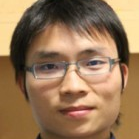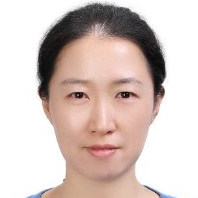New Trends of Machine Learning Applications in Computer Graphics and Image Processing
A special issue of Mathematics (ISSN 2227-7390). This special issue belongs to the section "Mathematics and Computer Science".
Deadline for manuscript submissions: 30 September 2024 | Viewed by 8465
Special Issue Editors
Interests: robotic vision; deep learning; visual intelligence of manufacturing equipment
Interests: computer graphics; computer vision; deep Learning
Interests: medical artificial intelligence; virtual reality and human interaction; surgical navigation and robot
Special Issues, Collections and Topics in MDPI journals
Special Issue Information
Dear Colleagues,
Recently, machine learning has become prevalent in all research directions (e.g., smart inspection, virtual/augmented reality, autonomous driving, and robotic). Researchers are seeking machine learning substitutes for all traditional methods, especially in the fields of computer graphics and image processing. However, machine learning applications should not simply train the same models in different cases; they should be smartly designed to cope with the differing nature of different cases. This situation is still far from being satisfactory in order to leverage the full potential of mathematical models, deep learning, and geometry-domain knowledge for the generation, processing, and understanding of different data modalities. In computer graphics and image processing, there are specific difficulties, for example, complex data structures such as triangular mesh, and off-grid operations such as scattered data interpolation preventing the ordinary neural network operations, e.g., convolution and pooling, from being directly used. In addition, large model sizes also are a big obstacle of real-time applications such as the rendering of large-scale scenes with high qualities. Novel applications of machine learning ideas to solve core problems in computer graphics and image processing are particularly welcome in this Special Issue.
Prospective authors are invited to submit original manuscripts on topics including, but not limited to:
- Machine learning for off-grid image processing;
- Machine learning for iso-geometric analysis;
- Geometry-based machine learning models;
- Machine learning on triangular meshes or tetrahedra meshes;
- Machine learning on real-time graphics or image processing;
- Machine learning for biomedical applications;
- Graph convolutional network for graphics or image processing;
- Deep learning for surface reconstruction and optimization;
- Representation learning for 3D irregular data;
- Multi-modal data fusion and processing;
- Low-level vision tasks;
- High-level vision tasks;
- Transformer for graphics and image processing;
- Reinforcement learning, continual learning, domain adaptation;
- Realistic 2D/3D data generation and synthesis;
- Computer animation, video games;
- Image analysis and understanding;
- Geometric and solid modeling and processing;
- Deep geometry processing;
- Deep learning for smart inspection and manufacturing.
Prof Dr. Zaixing He
Prof. Dr. Mingqiang Wei
Prof. Dr. Qiong Wang
Prof. Dr. Meng Wu
Guest Editors
Manuscript Submission Information
Manuscripts should be submitted online at www.mdpi.com by registering and logging in to this website. Once you are registered, click here to go to the submission form. Manuscripts can be submitted until the deadline. All submissions that pass pre-check are peer-reviewed. Accepted papers will be published continuously in the journal (as soon as accepted) and will be listed together on the special issue website. Research articles, review articles as well as short communications are invited. For planned papers, a title and short abstract (about 100 words) can be sent to the Editorial Office for announcement on this website.
Submitted manuscripts should not have been published previously, nor be under consideration for publication elsewhere (except conference proceedings papers). All manuscripts are thoroughly refereed through a single-blind peer-review process. A guide for authors and other relevant information for submission of manuscripts is available on the Instructions for Authors page. Mathematics is an international peer-reviewed open access semimonthly journal published by MDPI.
Please visit the Instructions for Authors page before submitting a manuscript. The Article Processing Charge (APC) for publication in this open access journal is 2600 CHF (Swiss Francs). Submitted papers should be well formatted and use good English. Authors may use MDPI's English editing service prior to publication or during author revisions.
Keywords
- machine learning
- computer graphics
- geometry optimization
- computer vision
- 3D vision
- isogeometric analysis








